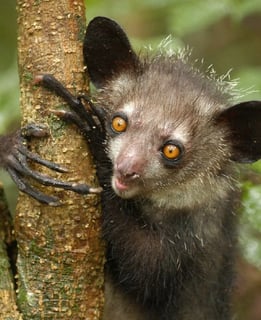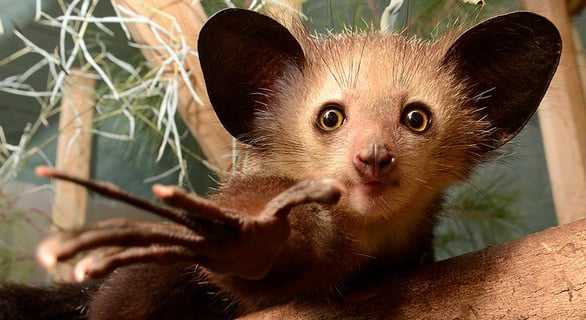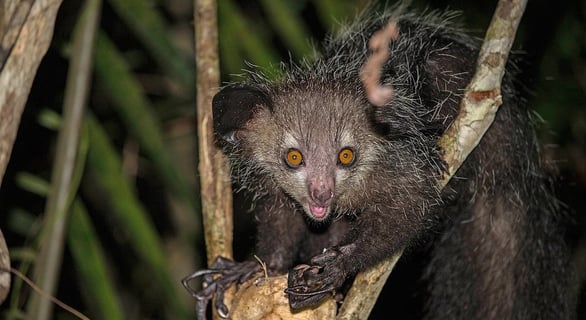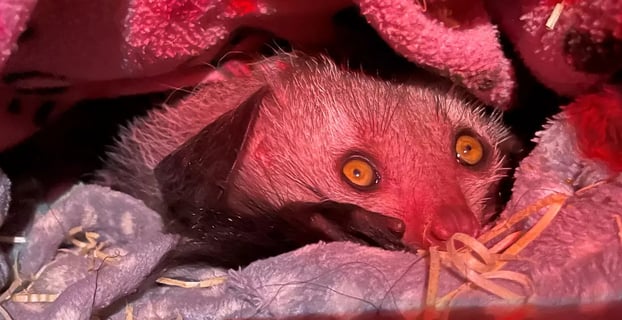The Endangered Aye- Aye
Daubentonia madagascariensis










They are located in eastern, northern, and central-western regions of the forests of Madagascar.
Their diet consists of fruits, nuts, seeds, and insects. They are also known to raid plantations for coconuts, lychees, and mangoes.
They live in the high canopy (usually over 70 meters high) in rainforest or dry deciduous forest.
The Aye-aye uses percussion foraging, which means it uses its finger to tap on trees, sensing if there are hollow spots where bugs might be.
Conservation Status & Population
- Endangered on IUCN red list due to the loss of habitat and hunting
- There are between 1,000 and 10,000 Aye-ayes left in the world
- The population of Aye-ayes seems to be in a sharp decline since the 1980s
Human threats
- Habitat loss of aye-aye’s natural forest habitat because of logging and urbanization
- Farmers kill aye-ayes because they are wrongly suspected for causing crop damage
- Lack of knowledge/education about aye-ayes makes people suspicious, and superstitious beliefs are already prevalent. “Aye-aye” can be translated as “I don’t know” in Malagasy because they associate this lemur with bad luck.
- Exponential population growth in Madagascar
- Occasionally hunted for food
Protection efforts
Now protected by federal law in Madagascar
Breeding center at Duke University in North Carolina, the Duke Lemur Center.
National Park and Nosy Mangabe Special Reserve provide them with protection. The special reserve was established in 1965 to protect the aye-aye.
